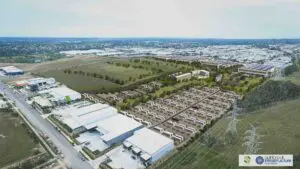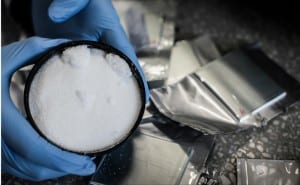Federal Labor has unveiled a plan to transform Australia into a globally competitive producer of batteries and battery materials by as early as 2035, despite starting from a position of occupying less than 1% of global supply chain today.
The ambitious challenge is laid out in the much anticipated National Battery Strategy, unveiled on Thursday by prime minister Anthony Albanese and minister for industry and science Ed Husic.
Similar to the Solar Sunshot, the idea is that global demand for energy storage will be such that it would be economic madness not to be a part of it – particularly for a country so well endowed with critical minerals and research know-how.
“We want to make more things here and with global demand for batteries set to quadruple by 2030, Australia must be a player in this field,” said Albanese on Thursday.
“Batteries are a critical ingredient in Australia’s clean energy mix. Together with renewable energy, green hydrogen, and critical minerals, we will meet Australia’s emission reduction targets and create a strong clean energy manufacturing industry.”
Husic says that while critical minerals are mined in Australia, it currently makes less than 1% of global battery materials or components. As with solar, China dominates the supply chain, representing up to 87% of global production in lithium hydroxide and 66% in lithium carbonate.
“It’s inexcusable that we supply half the global supply of lithium but produce less than one percent of the world’s processed battery components,” the minister says.
“If we mine it here, we should make it here,” he adds, in a foreward to the battery strategy, here.
“Australia has unmatched natural advantages to create a battery industry. These include world-leading renewable energy resources, critical minerals, skilled workers and a strong international trading reputation.
“The National Battery Strategy builds on Australia’s existing strengths and provides a pathway to move up the battery value chain and capitalise on key opportunities.
“This will allow Australia to capture a once in a generation opportunity presented by a thriving domestic battery industry.”
The actual strategy, which remains a fairly bare-bones affair, sets out five priorities – see below – to achieve the government’s 2035 vision, largely underpinned by the $523.2 million, Arena-administered Battery Breakthrough Initiative, the funding for which was announced in last week’s budget.

Less nebulously, the strategy also identifies four “high-value strategic opportunities,” starting with building stationary energy storage systems for households, communities and the grid, to firm and optimise renewables.
The second opportunity focuses on upgrading Australia’s raw minerals bounty into processed battery components to strengthen battery supply chains.
Both of these will likely be the focus of the Battery Breakthrough Initiative, which will provide production-linked incentives to support Australian manufacturers to develop critical battery manufacturing capabilities.
Further funds are likely to come from the $1.7 billion Future Made in Australia Innovation Fund, also administered by Arena for the support of innovation, commercialisation and manufacture of future critical technologies, including batteries.
Opportunities three and four include building on Australia’s existing research strengths to build safer and more secure battery technologies, and building batteries for transport, “including heavy vehicle manufacturing.”
Existing federally funded schemes, including the $20.3 million Building Future Battery Capabilities program and the $5.6 million Australian Made Battery Precinct, will also help deliver the strategy, the minister says.
“Australia is moving beyond a ‘hope for the best’ approach for economic security, to one that capitalises on our advantages, makes Australia an indispensable part of global supply chains and creates the secure jobs of the future,” Husic says.
“The global clean energy transition is happening – and we’ve got a once-in-a-lifetime opportunity for Australia to create more well-paid, secure jobs.”










